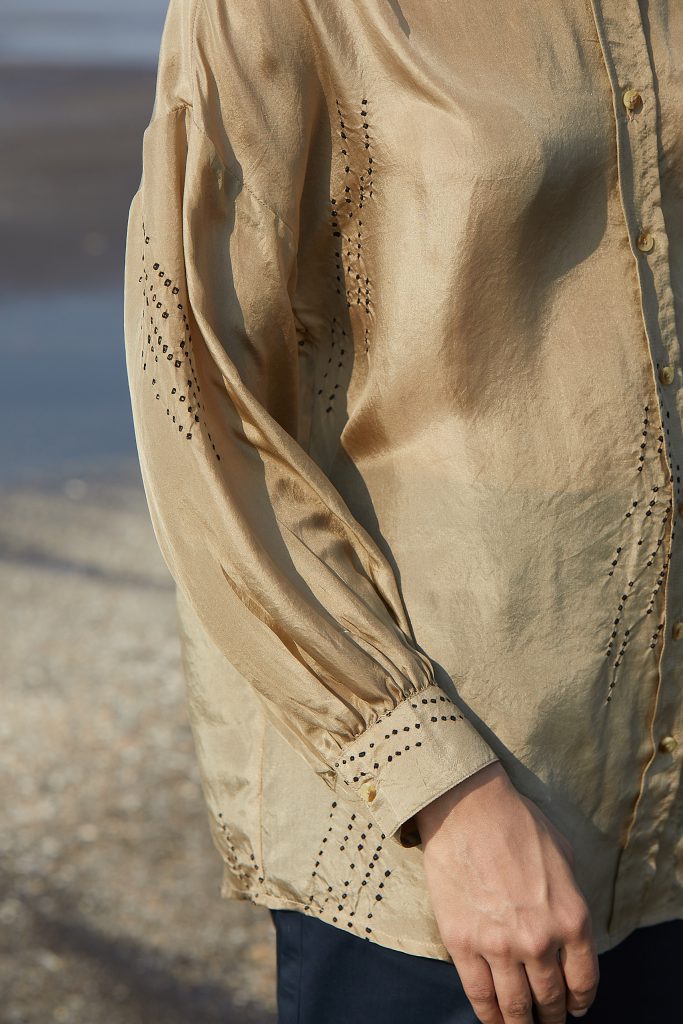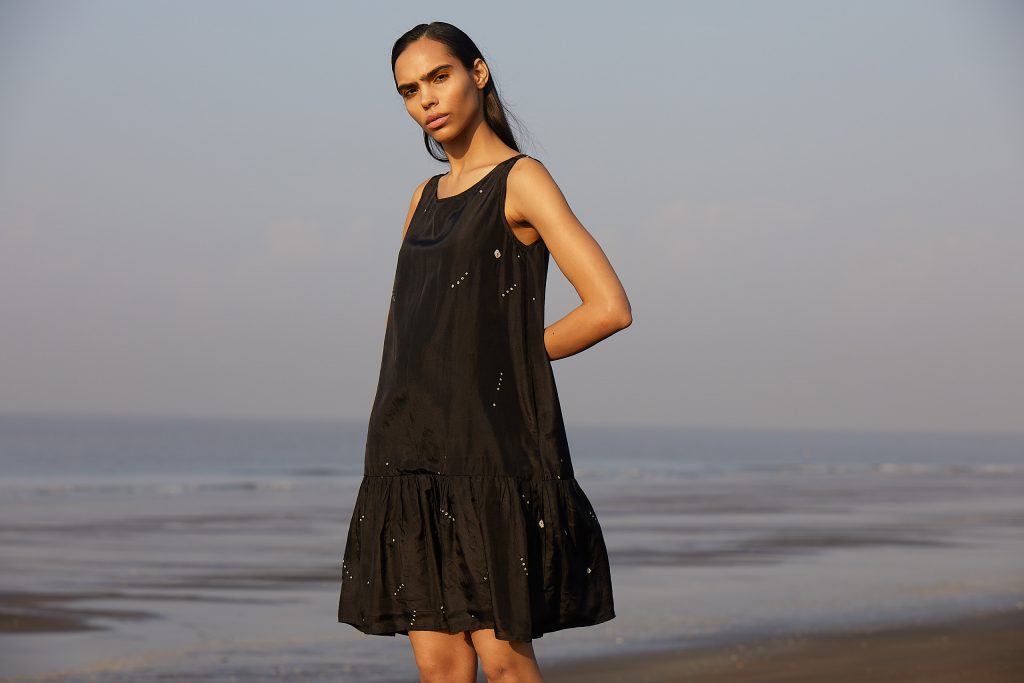Blogs
The Ties of Time
Shivangini Padhiyar
Tracing the meditative craft of tie-dyeing or bandhani, its legendary origin and its contemporary, sustainable revival by brands today, as an extension of MAP’s latest exhibition, Painted Stitches, Woven Stories II.
We often remember it by the saturated tone of her earth and sky, the graph of its landscape, the music carried by its winds. But after years of travelling across the spectrum of its veins, we know better. Kutch is special because of its people. The salt dripping off their forehead as they craft their livelihood with an easy pride shines brighter than the salt pans. Emotions that run as deep as the colours they wear. Faces that wear no masks. A generosity that is not codicillary to what or how much they have. The people of this land make living look easy even when it is anything but. Among these people are the Khatris of Kutch.
Legend goes that a saint was passing by a Khatri family’s home, when they welcomed him inside and served a freshly cooked meal. As a blessing for prosperity, he gave them a tied handkerchief. The khatris were traditional dyers, and the handkerchief invariably ended up in a dye vat. When the knot was opened later, a beautiful design had been formed. Today a few families continue to prosper in Kutch, thanks to Bandhani. The etymology of the word Bandhani is Baandh – which literally translates to – to tie.

A contemporary bandhani design by the brand, The Summer House. Image courtesy: The Summer House
Bandhej or Bandhani is the oldest form of tie and dye. A meditative craft process of tying small knots into the fabric while creating patterns and motifs intuitively. Often it is a cluster of patterns with hidden meaning, vibrant colour combinations and alluring twirls. Of course it is laborious too, perhaps which is why it is the women in the family who do the tying while the men are in charge of the dyeing. Traditionally, the dyes used were created by the artisans themselves, using herbs, minerals and natural pigments.
A finely tie-dyed sari could take anywhere from 15 days to 2 months to tie, depending on the complexity of the design. The most common tying techniques are ekdali – meaning single knot, trikunti which translates to three knots and chaubandi which means four knots. A boond, meaning a droplet, is a centre in a darker shade. These styles lay the foundation for exquisite and mathematically mind-numbing patterns and stories told through fabric.
To keep a craft relevant for a larger audience, it needs to adapt to their changing lifestyles. As Ghalib once said about poetry – you know it is truly powerful only when it reaches the zabaan of the masses. Similarly the poetic craft of bandhani must become a part of everyday modern wardrobes for it to continue enjoying the influence it has over centuries. This also ensures consistent year round work to the craftsmen. In The Summer House, we work to create a contemporary and minimal pattern play with bandhani. By shaping rich silk shirts and minimalist dresses that can be worn beyond the traditional invites, we hope to give it more causes of wearability.

A contemporary bandhani design by the brand, The Summer House. Image courtesy: The Summer House
Whether one has been to Kutch or not, if you have spent some time in India, chances are you have brushed shoulders with Bandhani. While corporate fashion houses have, as expected, exploited the craft by digitally printing traditional motifs and calling it bandhani, the craft continues to be coveted by connoisseurs and mindful customers. And trust me, you can always tell when the bandhani is born from hands. It reveals itself in subtle ways, yet never goes unnoticed.
The biggest district of India is dotted with craft clusters across its forty five thousand square kilometers. Block printing, embroidery, bell metal work, leather work, fabric weaving, wood lacquer work – and yet, what the Kutchi craft that truly has my heart is Bandhani. May each of us own one and pass it on for the generations to come.
A short video on the craft of Bandhani. Video credit and courtesy: The Summer House
Shivangini is the founder of The Summer House, a sustainable clothing e-boutique based out of Bengaluru, India. When not travelling to a craft cluster or shoot location, you’ll find her dabbling with words.








